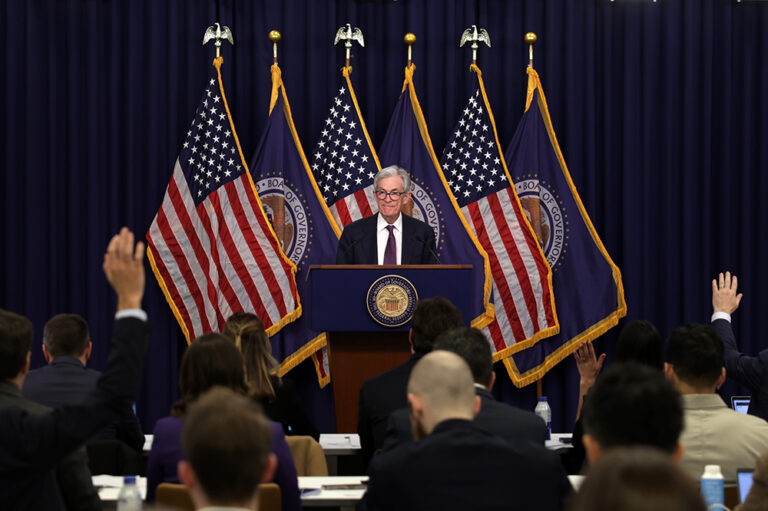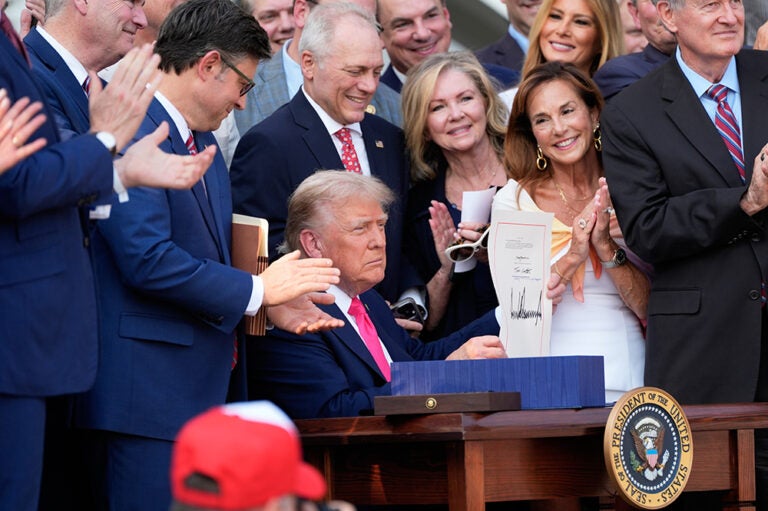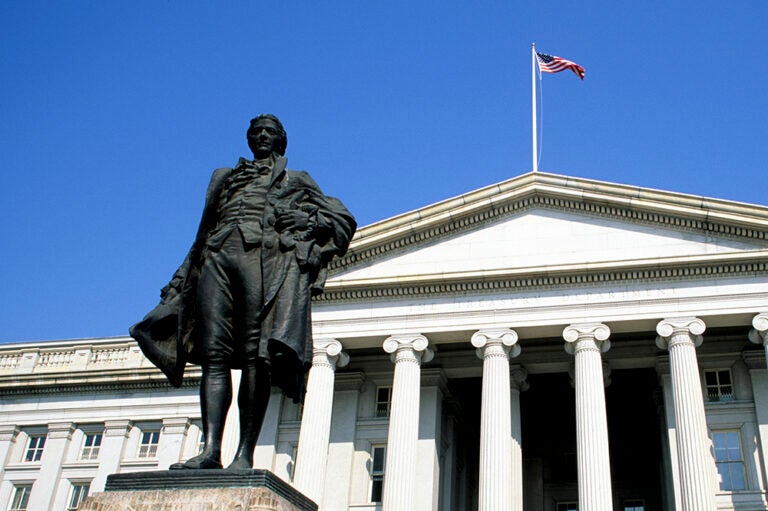In early 2023, the federal government hit its debt limit, also known as the debt ceiling, of $31.4 trillion. On June 3, 2023, policymakers suspended that limit — allowing the Treasury to continue issuing debt until January 1, 2025.
What Is the Debt Ceiling?
The debt ceiling refers to the maximum amount of debt that the Treasury can issue to the public and to internal government accounts. It does not authorize new outlays; rather, it sets a limit on borrowing to pay for spending that Congress and the President have already approved.
On December 16, 2021, policymakers raised the debt ceiling to $31.4 trillion. On January 19, 2023, the federal government hit that limit. At that point, the Treasury began using “extraordinary measures” to create space for federal borrowing. Those measures, along with the Treasury’s existing cash balance and incoming tax revenues, kept the federal government from defaulting on its debt for several months. On June 3, 2023, policymakers suspended the debt ceiling until January 1, 2025.
What Happens if Congress Doesn’t Raise or Suspend the Debt Ceiling?
When the debt limit is close to being breached, or when a suspension of the ceiling is nearing, lawmakers would have to act to avoid serious economic and budgetary consequences. If the Treasury runs out of extraordinary measures, it would only have incoming revenues at its disposal. Since the federal government is currently running a large deficit, incoming revenues will not be nearly sufficient to cover all payment obligations. Without the ability to close that gap through borrowing, Treasury would have to somehow determine when payments would be distributed for the wide range of government activities.
Without an increase in the limit, worries about the government’s creditworthiness would ripple through global financial markets. Investors would likely demand a higher return on debt issued by the federal government. In turn, the government would have to pay more interest on its debt, which would create a further strain on future budgets.
There would also be broader economic consequences. In a 2023 report from Moody’s Analytics, the credit rating agency found that even a short-term breach of the federal debt limit could reduce gross domestic product, result in the loss of 2 million jobs, and wipe out trillions of dollars in U.S. household wealth. A prolonged breach of the debt ceiling would likely amplify those effects.
Are There Still Negative Consequences for Waiting Until the Last Minute to Address the Debt Ceiling?
Yes. If Congress addresses the debt limit — even at the last minute — the effects would not be as harmful as the scenario described above. However, last-minute fiscal brinkmanship could still have significant negative consequences. Even though the government has never defaulted on its principal and interest payments, the continued pattern of brinksmanship is a periodic source of anxiety for financial markets, threatening our credit rating, increasing interest rates, and causing measurable damage to our economy.
A paper from the Federal Reserve suggests that waiting to address the debt ceiling cost the federal government $260 million in 2011 and $230 million in 2013 because investors demanded a higher return on Treasury bills as it got close to the time at which the Treasury would run out of borrowing authority. In fact, the bills that saw the highest increase in yield were those that matured on dates soon after the projected point at which Treasury would run out of cash, demonstrating that some investors recognized the risk that interest payments could be delayed or canceled. That phenomenon occurred in 2023 as well.
In addition, credit rating agencies can respond by downgrading their ratings for United States debt. In 2011, when Congress delayed addressing the debt ceiling until the last minute, S&P lowered their long-term sovereign credit rating for the United States from AAA to AA+. S&P’s rationale gives valuable insight into the market’s perception of delayed action on the debt ceiling:
The political brinkmanship of recent months highlights what we see as America's governance and policymaking becoming less stable, less effective, and less predictable than what we previously believed. The statutory debt ceiling and the threat of default have become political bargaining chips in the debate over fiscal policy.
Conclusion
While the debt ceiling itself is not an effective check on our unsustainable national debt, failure to address it does represent a threat to our economy. Governing by crisis, engaging in fiscal brinkmanship, and risking our nation’s creditworthiness are not efficient means of addressing our nation’s fiscal challenges. Instead of putting our economy at unnecessary risk, lawmakers should focus on a long-term plan to address the structural mismatch between spending and revenue, in order to put us on a more sustainable fiscal path.
Photo by stockvisual/Getty Images
Further Reading
The Fed Reduced the Short-Term Rate Again, but Interest Costs Remain High
High interest rates on U.S. Treasury securities increase the federal government’s borrowing costs.
How Did the One Big Beautiful Bill Act Affect Federal Spending?
Overall, the OBBBA adds significantly to the nation’s debt, but the act contains net spending cuts that lessen that impact.
What Types of Securities Does the Treasury Issue?
Learn about the different types of Treasury securities issued to the public as well as trends in interest rates and maturity terms.


